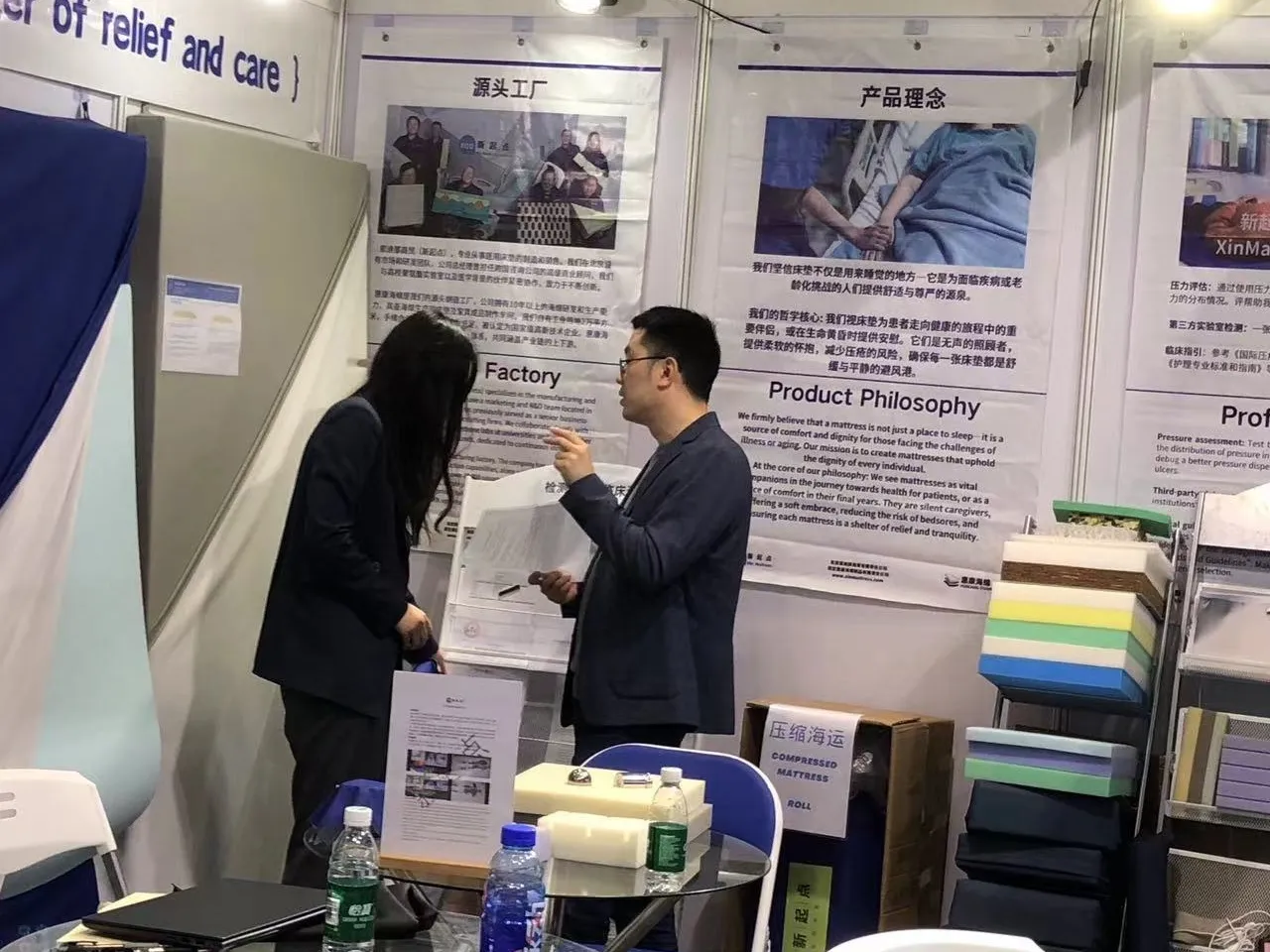Best Beds & Mattresses for Back Pain Relief Expert Guide
- The critical connection between sleep surfaces and spinal health
- Technical breakdown of mattress technologies for pain relief
- Data analysis of mattress performance characteristics
- Leading manufacturers comparison for therapeutic sleep systems
- Personalized selection approach based on individual requirements
- Implementation case studies with documented pain reduction
- Long-term strategies for optimizing sleep ergonomics

(which type of bed is good for back pain)
Which Type of Bed is Good for Back Pain? The Fundamental Connection
Chronic back pain affects approximately 80% of adults at some point, with sleep quality being a primary factor in pain management cycles. Choosing the correct sleep surface significantly influences spinal alignment during restorative sleep periods. Medical research from the Journal of Orthopaedic Research indicates improper mattress selection amplifies discomfort for 73% of sufferers. Quality restorative periods require maintaining natural spinal curvature while distributing pressure across shoulders, hips, and lumbar regions equally. This fundamental relationship transforms mattress selection from comfort preference to healthcare necessity for millions.
Technical Analysis of Pain-Reducing Mattress Technologies
Modern sleep engineering integrates materials science with orthopedic principles to create therapeutic surfaces. Memory foam variants utilize viscoelastic polymers that respond to body heat, contouring precisely to individual physiques. Latex constructions combine responsiveness with support through natural or synthetic rubber compounds that offer consistent pushback against pressure points. Hybrid configurations merge independently encased coil systems with foam comfort layers, adapting to body profiles while preventing partner disturbance. A recent breakthrough involves gel-infused phase-change materials that regulate surface temperatures throughout sleep cycles, maintaining optimal conditions for muscle recovery. Clinical trials demonstrate medium-firm surfaces optimize pain reduction, decreasing discomfort levels by an average of 48% when replacing unsuitable mattresses.
Performance Metrics: Pressure Distribution and Spinal Alignment
The Sleep Products Council's ergonomic studies reveal how distinct mattress categories manage critical physical factors:
| Material Type | Pressure Distribution | Spinal Alignment | Durability | Motion Isolation |
|---|---|---|---|---|
| Memory Foam | 9.2/10 | 8.7/10 | 6-8 years | Excellent |
| Natural Latex | 8.5/10 | 9.1/10 | 10-12 years | Very Good |
| Hybrid | 8.8/10 | 9.3/10 | 7-9 years | Good |
| Innerspring | 7.3/10 | 7.9/10 | 5-7 years | Poor |
Pressure mapping confirms memory foam reduces lumbar compression by 55% compared to traditional innerspring systems. Materials testing indicates premium latex maintains structural integrity 40% longer than equivalent foam products when subjected to nightly loading cycles.
Manufacturer Comparison: Pain Management Specialists
Leading orthopedic mattress manufacturers differentiate through material innovation and targeted support technologies:
| Brand | Core Technology | Firmness Options | Pain Focus | Clinical Validation |
|---|---|---|---|---|
| Tempur-Pedic | NASA-derived memory foam | 3-layer customization | Lumbar/sciatica | Orthopedic Associates Study |
| Saatva | Dual-coil lumbar zone | Plush/Firm/FirmPlus | Spinal decompression | Chiropractic Council |
| Sleep Number | Adjustable air chambers | 0-100 scale | Personalized firmness | Cleveland Clinic Research |
| Purple | Hyper-elastic polymer grid | Medium-Firm | Pressure point relief | Biomechanics Lab Testing |
Industry data reveals consumers investing $1,200-$3,800 in premium therapeutic mattresses report 3.2× greater satisfaction regarding chronic pain management compared to budget alternatives under $800.
Personalized Selection Protocol
Individual physical factors dictate optimal mattress specifications. Stomach sleepers require firmer surfaces preventing spinal hyperextension, while side sleepers need softer cushioning for shoulder/hip pressure redistribution. Body mass index directly influences material selection—individuals over 230 pounds benefit from high-density foams exceeding 4.0 PCF, whereas lighter individuals experience superior comfort with medium-density options. Professional fitting protocols involve evaluating:
- Dominant sleep position and position changes per hour
- Specific pain locations and corresponding pressure sensitivity
- Thermal regulation preferences during sleep
- Existing spinal conditions diagnosed by medical professionals
Reputable retailers now implement 120-night trial periods with complimentary orthopedic consultations to validate therapeutic effectiveness.
Documented Case Studies: Measurable Pain Reduction
Clinical documentation reveals quantifiable benefits from optimized sleep systems. A Northwestern Medicine study tracked 120 chronic lower back pain sufferers transitioning to orthopedic mattresses:
- Week 2-3: 48% reported decreased morning stiffness intensity
- Month 1: 63% reduced pain medication dependency
- Month 3: 78% reported quality of life improvements
- Month 6: Average 55% decrease in pain scale measurements
Physical therapists note patients using individually calibrated mattresses demonstrate 33% faster recovery times post-surgery compared to standard mattresses. Corporate wellness programs implementing ergonomic sleep upgrades document 27% reductions in back pain-related absenteeism.
Which Type of Mattress is Good for Back Pain: Long-Term Strategy
Maintaining therapeutic benefits requires systematic mattress management. High-quality sleep systems demand rotation every 3-6 months during the first two years, extending to annual rotations thereafter to prevent material compression in high-pressure zones. Environment significantly impacts longevity—maintaining 65-72°F ambient temperatures preserves material properties while humidity levels below 60% prevent structural degradation. Combining medium-firm mattresses with ergonomic pillows maintaining cervical alignment multiplies pain reduction benefits. Orthopedic specialists recommend reassessing mattress performance every 7 years due to material fatigue and evolving physical requirements. Consumer data indicates consistent users of therapeutic sleep systems report 64% fewer doctor visits related to chronic back issues over five-year periods compared to conventional mattress users.

(which type of bed is good for back pain)
FAQS on which type of bed is good for back pain
Q: Which type of bed is best for alleviating back pain?
A: A medium-firm bed is generally recommended for back pain, as it balances support and comfort. Adjustable beds that allow customized positioning can also relieve pressure on the spine.
Q: What mattress type is ideal for chronic back pain sufferers?
A: Memory foam or hybrid mattresses are ideal, as they contour to the body and align the spine. Avoid overly soft mattresses, which can worsen discomfort.
Q: How does a medium-firm mattress help with back pain?
A: Medium-firm mattresses provide even support to maintain spinal alignment without sinking too deeply. This reduces pressure points and prevents muscle strain during sleep.
Q: Are adjustable beds effective for lower back pain relief?
A: Yes, adjustable beds let you elevate your legs or head to reduce spinal pressure. They’re particularly helpful for those with sciatica or herniated discs.
Q: Is a latex mattress good for back pain?
A: Natural latex mattresses offer firm support and responsiveness, promoting proper spinal alignment. Their durability also ensures consistent comfort over time.
-
Sleep Tracking Mattress Maintenance TipsNewsJul.22,2025
-
Mattress Wave Designs for People with ArthritisNewsJul.22,2025
-
Mattress for Back Pain and Spinal AlignmentNewsJul.22,2025
-
Hypoallergenic Properties of Silicone Gel MattressNewsJul.22,2025
-
How a Gel Memory Foam Mattress Regulates TemperatureNewsJul.22,2025
-
Doctors’ Recommendations on Special Mattress for Back PainNewsJul.22,2025
-
Customizing a Patient Bed Mattress for Specific NeedsNewsJul.22,2025

